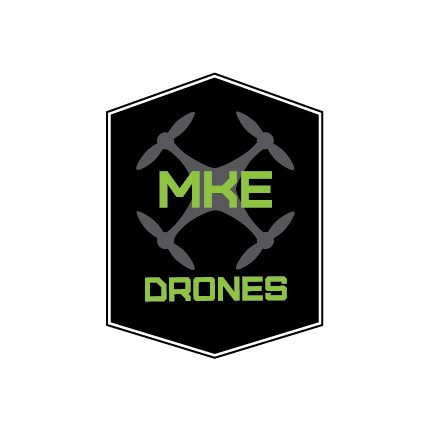Looking for aerial photos or video in Milwaukee?
One of the things that sets MKE Drones apart from the competition is a commitment to flying legally. In today's evolving drone industry that can change quickly as well as be very complex. Staying on top of changes and understanding the laws is crucial to what we do. So what does it mean to "fly legally"? All of this will be in reference to flying commercial - flying for profit, or to benefit your business. Basically if it has a logo on it, was done for money, or will be used for marketing then it can be considered commercial.
Probably first and foremost is only using remote pilots with a Part 107 UAS certification. This certification is obtained through taking a test administered by the FAA at a special testing center. The test is not easy and requires knowledge of weather, aviation charts, radio communication, decision making, and about a dozen other areas. Then each pilot is vetted by the TSA to make sure that there are no concerns from a national safety perspective before being sent their certification. Every remote pilot at MKE Drones is certified, or has a certified pilot next to them and able to override and take control.
Once the FAA gives out a pilot certification, regulations must be followed to "fly legally". These regulations are all detailed in the Part 107 rules released August 29, 2016. One of the biggest rules is gaining authorization to fly in controlled airspace. All of the US is broken down into various classes of airspace, and you need to know which one - any airspace that is controlled by a tower requires prior authorization for flight which must be obtained from the FAA.
Once permission is obtained, there are still regulations that apply to how you can fly the drone. Here is a list of a few basic regulations that must be followed to make sure the FAA won't be looking to hand out a fine:
- The pilot must maintain visual line of sight with the aircraft - without using things like binoculars. First person view on a camera screen does not qualify
- Flights must occur between civil sunrise and civil twilight.
- Yield to all other aircraft
- Maximum height of 400' above ground level (unless restricted by your airspace authorization)
- No operation from a moving vehicle (unless in sparsely populated areas)
- No flying over people unless they are direct members of the flight crew (like the pilot, or an assigned observer aiding the pilot).
- Pre-flight inspection must be done by the remote pilot
There is one consistent theme to these rules of safety. The FAA is trying to take a well structured system for manned aircraft, and incorporate small easily purchased drones into the national airspace as safely as possible. It took a while for the US to get these regulations - other countries have had them for years - but they did have a difficult task. Most of the industry is happy with the new rules as it opened up for people to fly drones and make money without a crazy level of red tape and ambiguous rules, which was the case before Part 107.
MKE Drones flies legally. Its not as difficult as it was, but it still takes a tremendous amount of knowledge before you even learn to manipulate the sticks on the controller. Then on top of that it takes practice to get smooth footage and learn to get the right framing for photos. Does to company you have been looking at using follow the regulations? Does their work look good or just ok? Check our Portfolio and see our quality.
